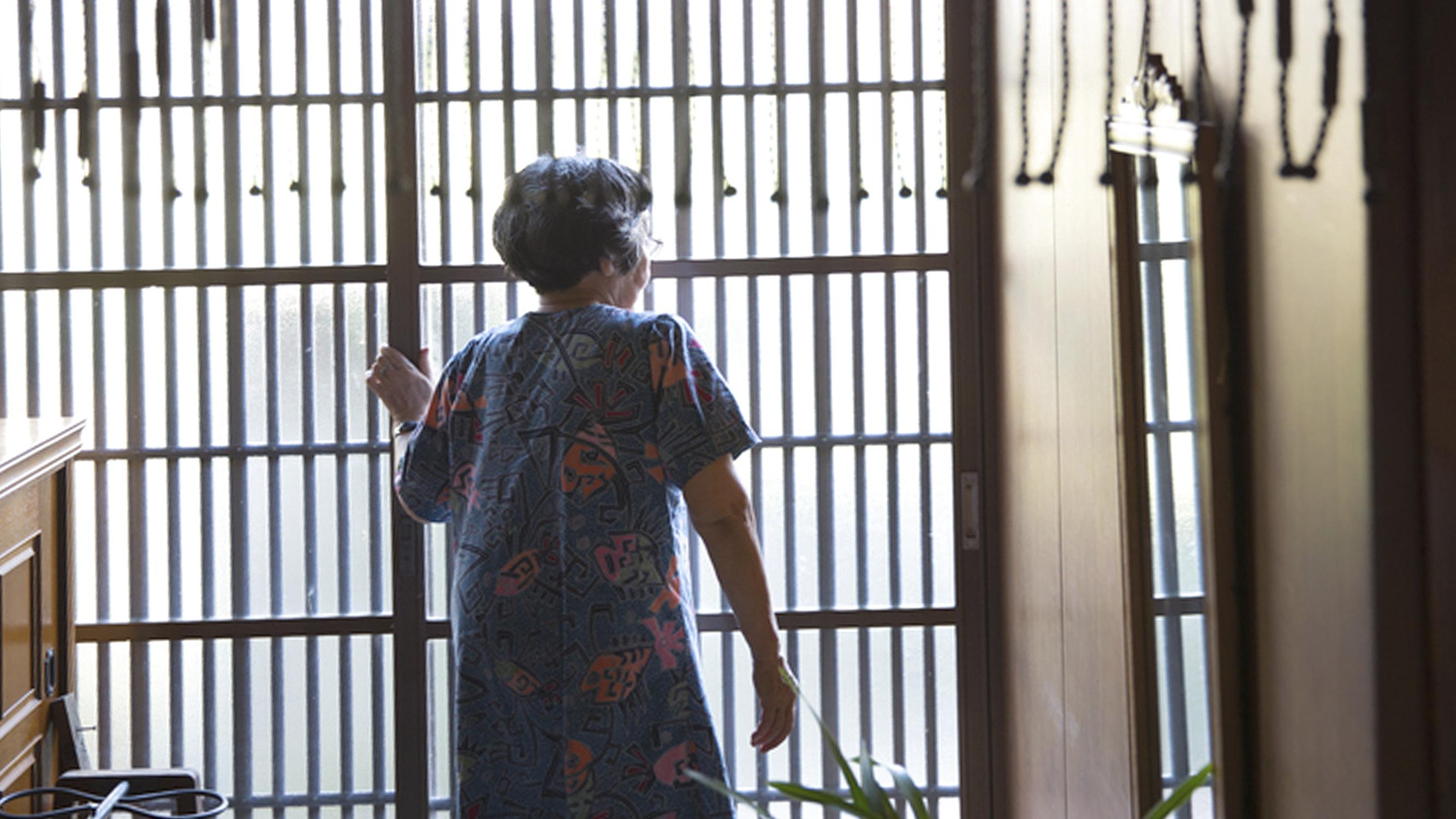
Toyota's C+walk series offers mobility assistance for those who have trouble walking, tackling a problem faced by many around Japan.
Many users comment that they are drawn to the C+walk’s stylish design.
Indeed, the development team was conscious of making something people wanted to ride and also looked good in the process.
Masashi Yamada, Project Manager, Commercial CASE Planning & Development Div.
It’s important that they blend right in with people, so we designed the standing-type C+walk T by working backward from the size of the rider.
From front to back, it is the length of one step and as wide as a person’s hips. Since humans sway side to side as they walk, strictly speaking, the C+walk T takes up a smaller area than a pedestrian.
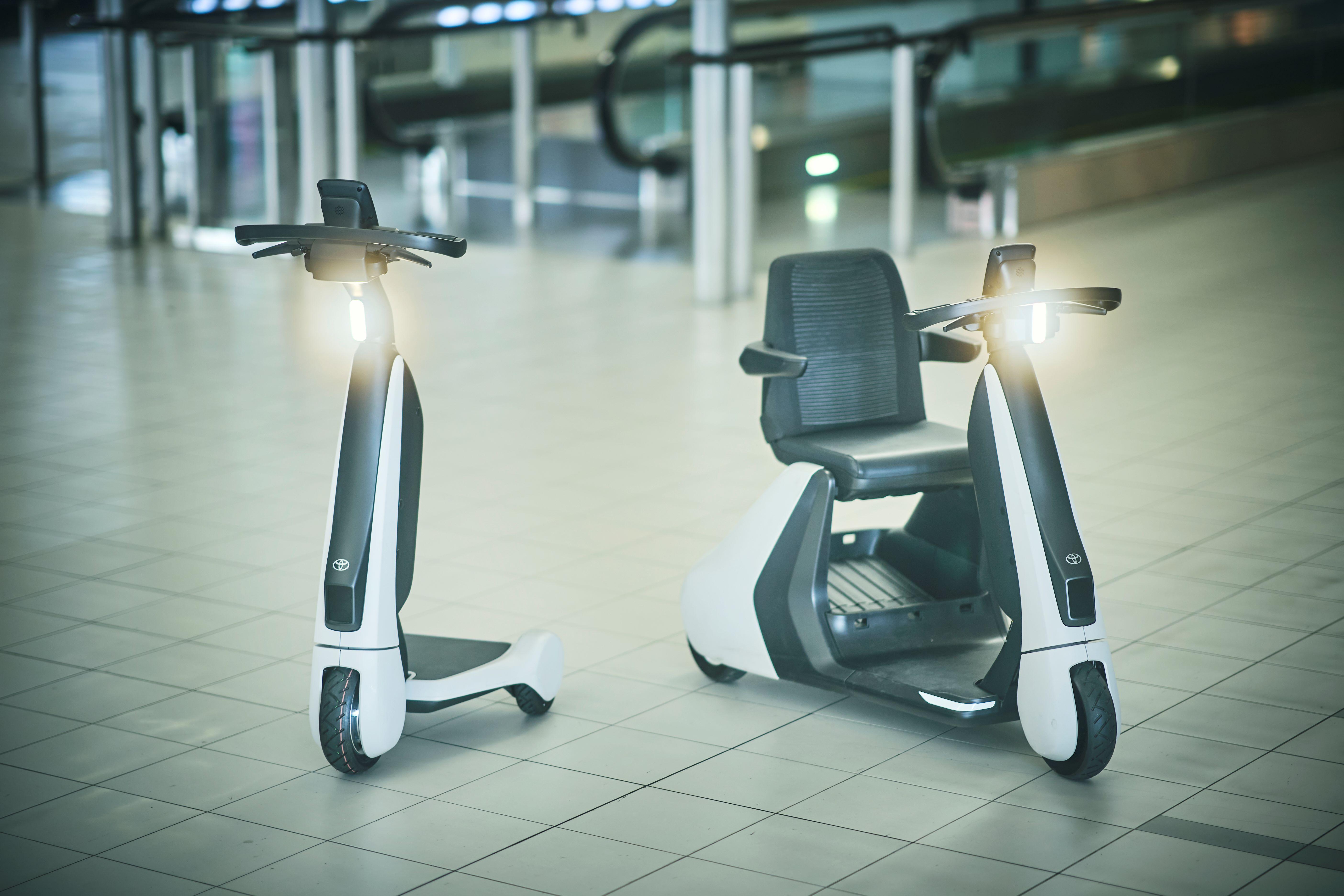
As for the seated C+walk S, the fact that it tapers upward from the base results in a very sleek look for its size. In both models, we’ve concealed the tires as much as possible. We didn't want people to feel intimidated and think, “Look out, something’s coming!”
An 8 km day at the airport
For this article, Toyota Times tagged along to a test ride session at New Chitose Airport in Hokkaido. This jointly organized event was the C+walk’s first public trial at an airport.
The walking distances in a facility as large as an airport are inevitably long. Visited by all kinds of people, including those with limited mobility, it is an ideal place for observing user needs.

“It’s simple to ride and doesn’t need a license, which makes it an easy recommendation for older visitors and overseas passengers,” says Kawabe, one of the airport’s information staff.
The standing C+walk T was designed not just for older users but a wide variety of situations.
Yamada and his team envision them being used in large factories, shopping centers, and other businesses, as well as by airport staff. They could even help visitors explore larger parks and tourist sites.
Kawabe, Hokkaido Airports Co., Ltd.
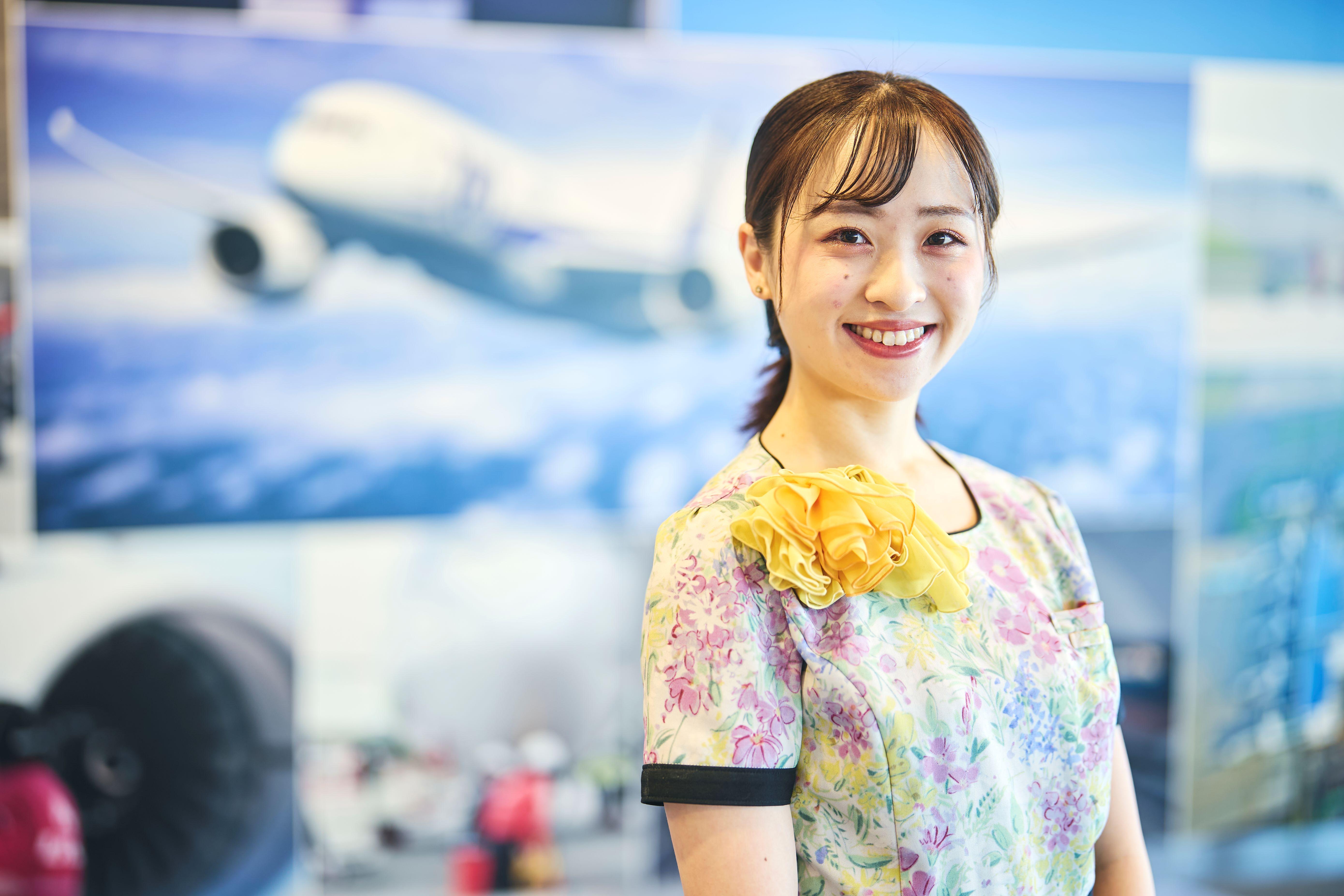
We do the rounds to check for suspicious items or see if anyone needs help, walking an average of 7 to 8 kilometers a day.
The C+walk T would not only make it easier to get around but to do so safely, automatically slowing down or sounding an alarm if a small child or a rushing passenger darts in front.
“Getting around in the summer heat without sweating would also be great,” Kawabe added with a laugh after the interview.
Those who took the C+walk for a test ride also shared their thoughts:
“The simple controls took no time to learn.” “It was even more nimble than I imagined.” “I thought it was for older users, but this design makes me keen to try.” “It’s so much fun!”
The C+walk put smiles on many faces.
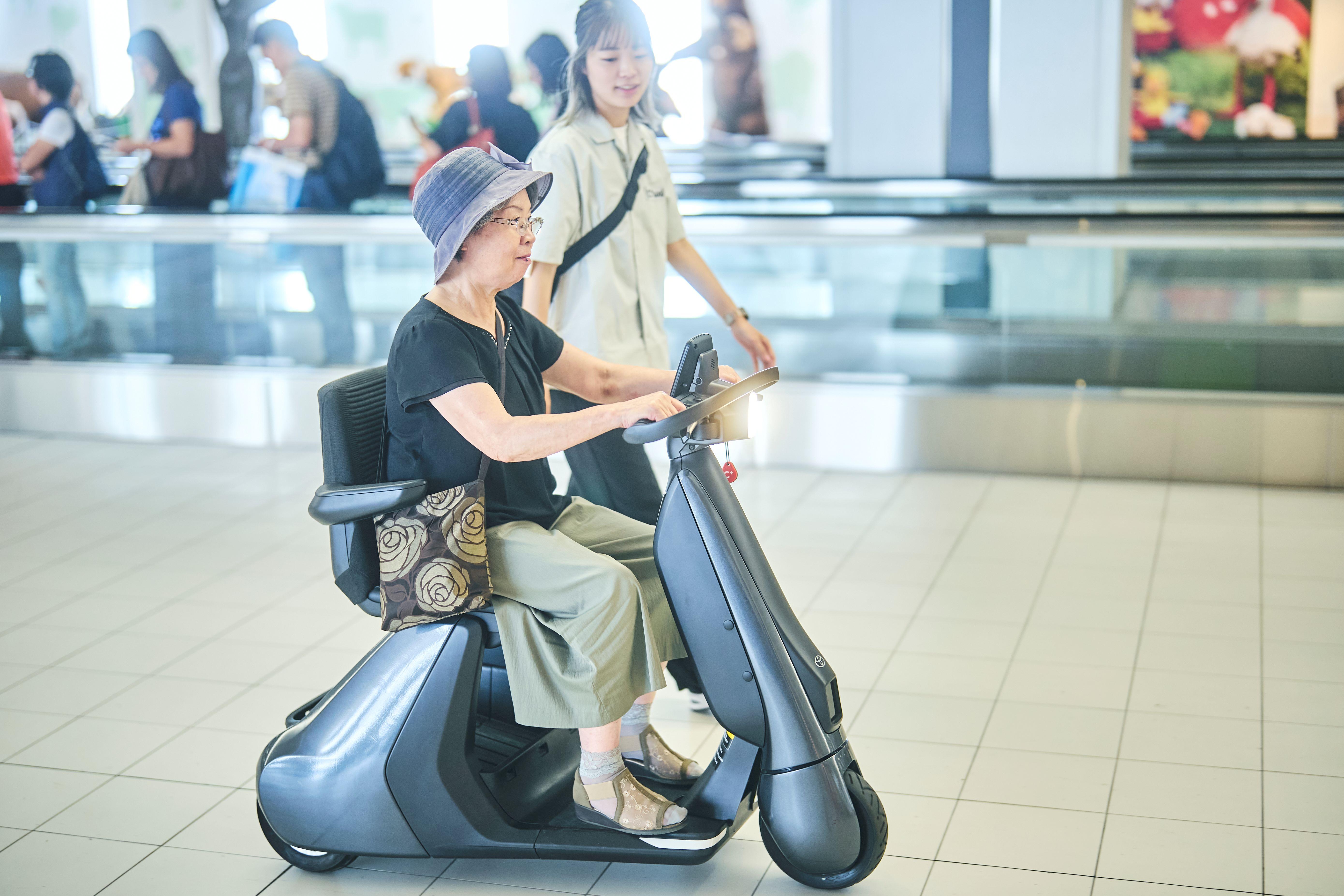
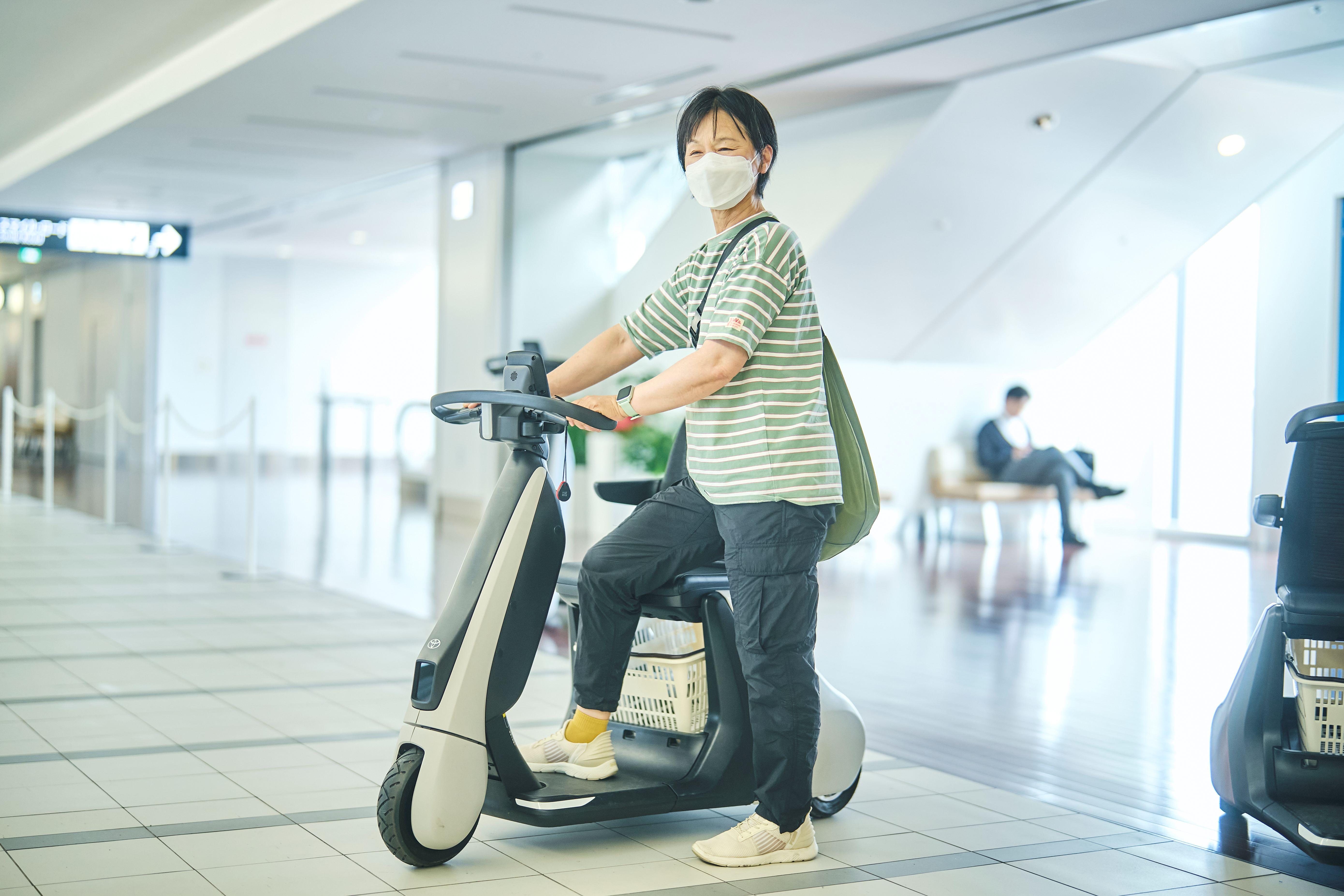
But can it handle hills?
At the test ride event, one man asked whether the C+walk could handle bumps in the road, not just flat surfaces like those in the airport. Let’s check the photo below.
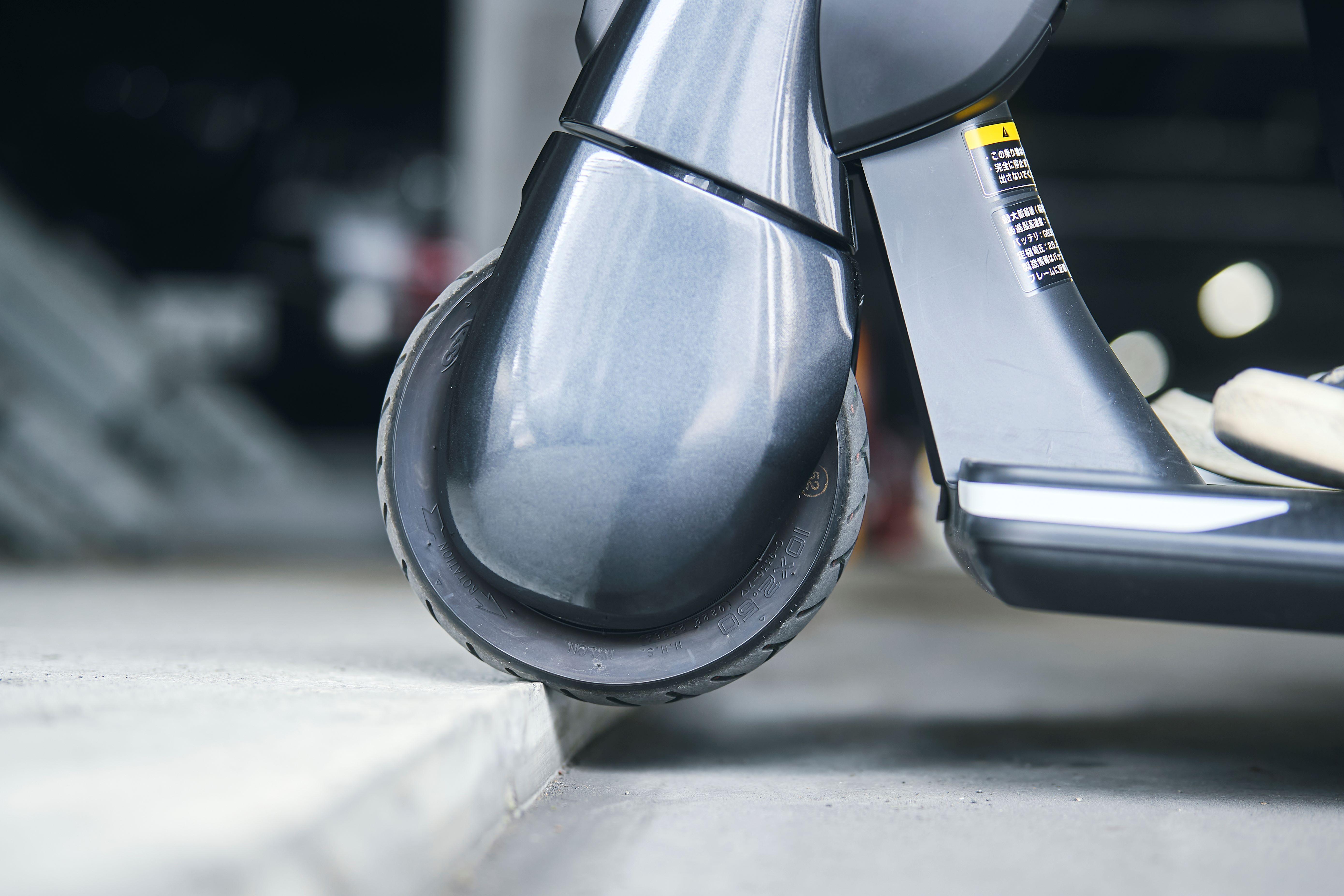
The C+walk S can clear steps of up to 5 cm, which is the maximum allowable height difference between footpaths and streets, as set out in Japan’s road standards.
It also does well on slopes and can swiftly scale any incline up to 10°. Shopping mall parking lots have a maximum ramp gradient of around 9.4°. While such slopes are rarely found in cities, the C+walk can climb even steeper terrain.
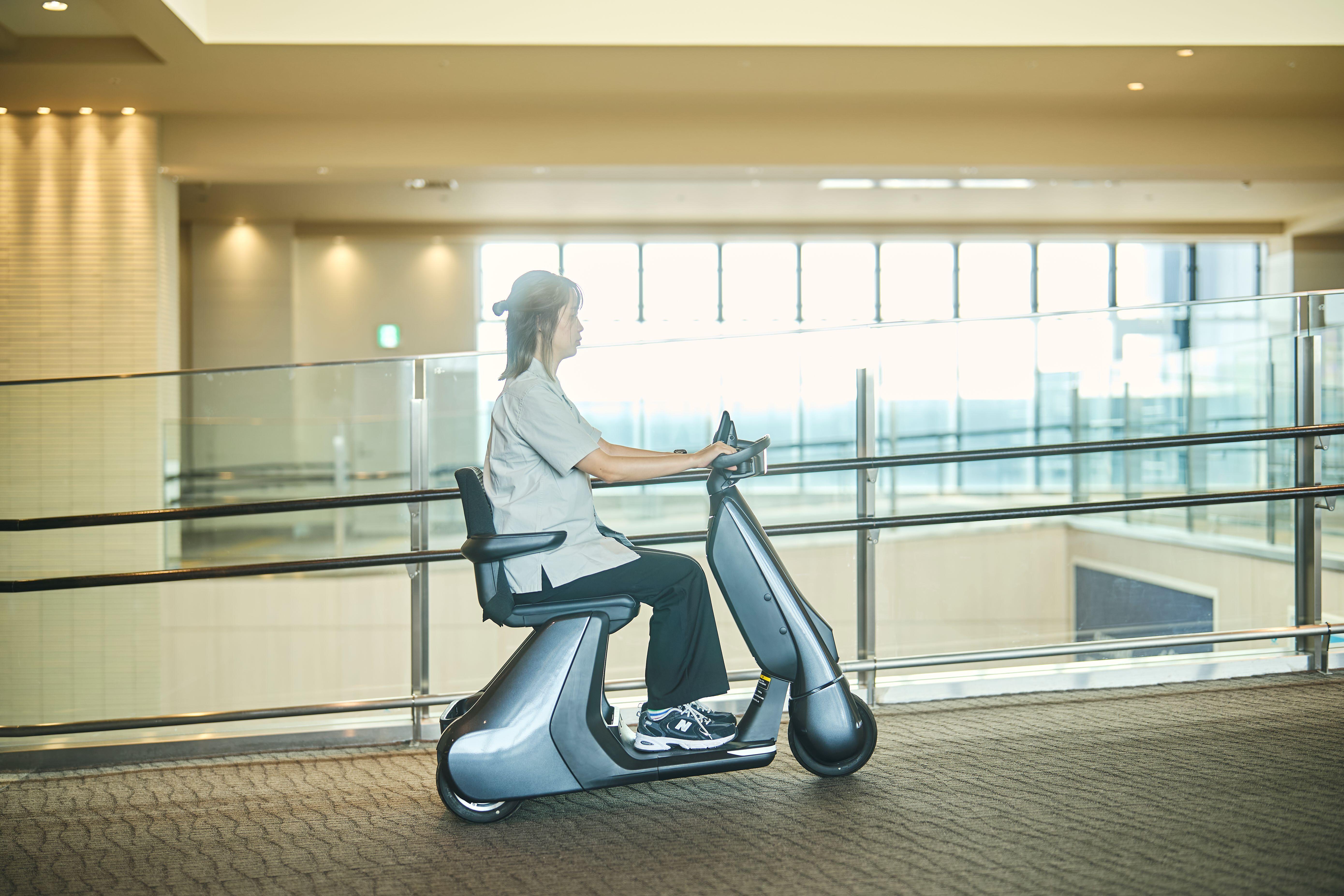
At another test ride event in Hiroshima, one visitor aged over 100 had no trouble mastering the C+walk and enjoyed using it to get around. To close out our interview, Yamada also shared his own story.
Masashi Yamada, Project Manager, Commercial CASE Planning & Development Div.
On a personal note, my late father rarely left the house after giving up his driver’s license. Because of that, his physical strength swiftly deteriorated…
Though he didn’t live to see it, as an engineer, I feel very fortunate that I could help create a possible solution to such social challenges. Now, my in-laws use the C+walk S, and I’m so pleased to hear that they are getting out and about on their own.
Yamada continues to expand his efforts with the C+walk series, treating mobility not as an obstacle to be overcome but as a chance to make dreams come true.

